For an exhibition bearing the loaded title Unfolding Histories: 200 Years of Resistance, we might arrive armed with expectations of unfettered rage and guerilla art tactics. But Sandy Rodriguez, the Los Angeles–based artist with a probing interest in untold stories of injustices and resistance in California, wisely deploys a light touch in her explorations of historical uprisings in the central region of our state — dating back roughly to the all-too-little-known Chumash revolt at the Santa Barbara Mission in 1824.
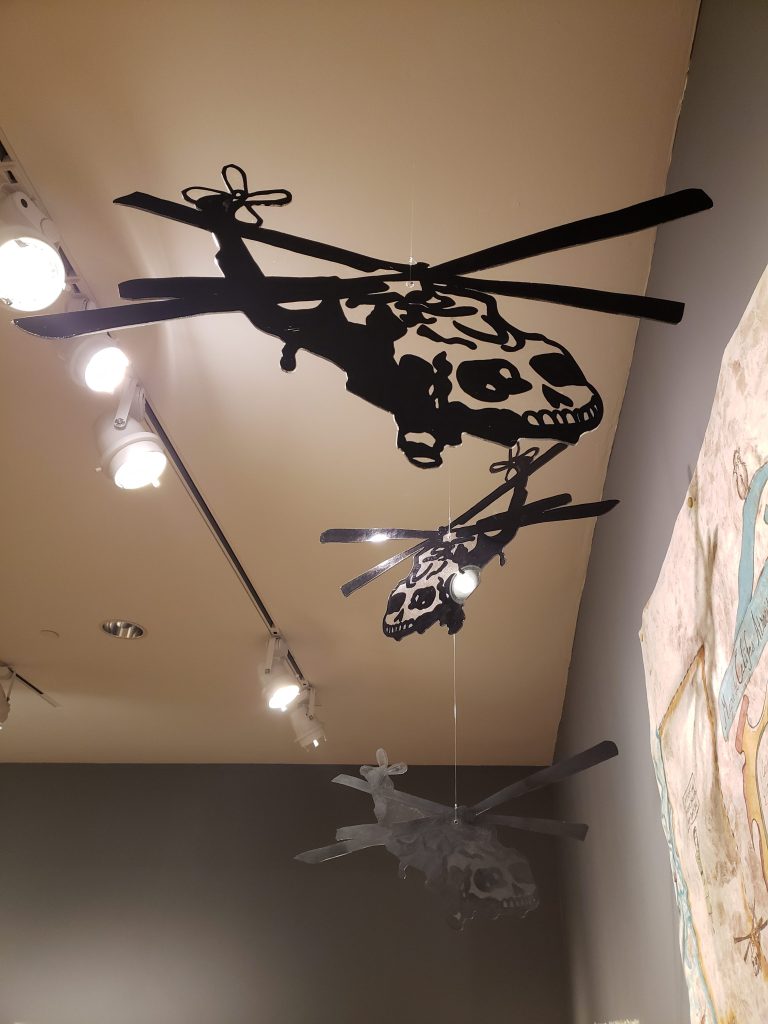
Her enticing and inventive show, now at the UCSB Art, Design & Architecture Museum with Sophia Quach McCabe as guest curator, proceeds with a deceptive calm and deals in faux antiqued imagery, for the most part. Closer inspection and reading (wall texts do matter, and elucidate, in this case) reveals secret agendas and revelations tucked into the details.
As an impressive literal centerpiece of the show, “Mapa of Resistance & Revolt in Central Califas,” Rodriguez’s large accordion-style folding screen in the Japanese byōbu tradition fills the center of the museum’s back gallery. Described as an “anti-colonial map,” the screen’s central image finds Santa Barbara’s “Queen of the Missions” engulfed in flames, a metaphorical depiction of the Chumash revolt, one of the boldest efforts of Native American fighting back against the mission system’s program of semi-genocidal invasion and enslavement, on the eve of its bicentennial.
On the reverse side of the screen, we see Santa Barbara from the dreamy nocturnal perspective of Santa Cruz Island, originally a Chumash village known as Limuw, a sacred site in tribal heritage and folklore.
Dangling from the gallery ceiling, her Plexiglas and painted “Calavera Copter” pieces serve as slightly unnerving surveillance emblems, based on Blackhawk helicopters. The slowly rotating copters cast moving shadows on her tall and, again, initially innocent-seeming piece “Mapa de Califas — Atrocities, Isolation, and Uprisings, 2020-2021.” Immigration wars and oppression, police violence, and other injustices — organized into specific vignettes — are subtly woven into the vintage-looking map, created during the pandemic lockdown.
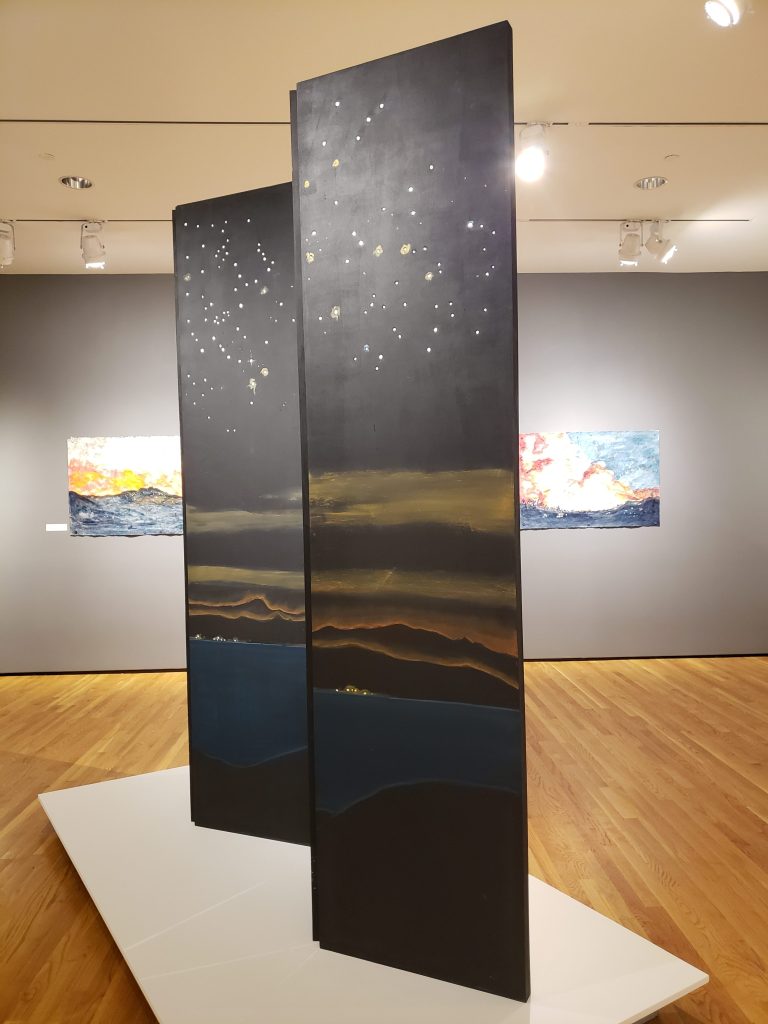
At times, present tense reference points intersect with historical matters, as with the fire-inflicted landscape of her Pronósticos/Fire Paintings series, connecting the ancient practice of controlled burns by Native Americans and the more recent climate-change-fueled wildfires in California, with symbolism of protest in the wings. These paintings also make reference to the Florentine Codex, which details the Spanish invasion of Mexico during the 16th century, a critical backdrop in an exhibition rich in critical backdrops.
Part of her artistic practice involves using organic and site-specific natural art resources, creating handmade pigments and working with plants and minerals, in accord with ancient art-making and craft in the Americas before the arrival of Europeans. A more peaceful series of works detail medicinal plants on amate paper.
With this work, Rodriguez seduces us into a visual, sensual allure, packing iconographic and historical depth charges, particularly dealing with native peoples and acts of rebellion not commonly known through conventional history channels. The tactic potentially conveys a stronger, more slyly subversive impact than an edgier, less subtle approach. Her show raises questions, uncovers points of historical-racial friction, and inspires inquiry as well as pure admiration for the unique artistry at work. —Josef Woodard
Sandy Rodriguez — Unfolding Histories: 200 Years of Resistance is on view at UCSB Art, Design & Architecture Museum through March 3, 2024. See museum.ucsb.edu.

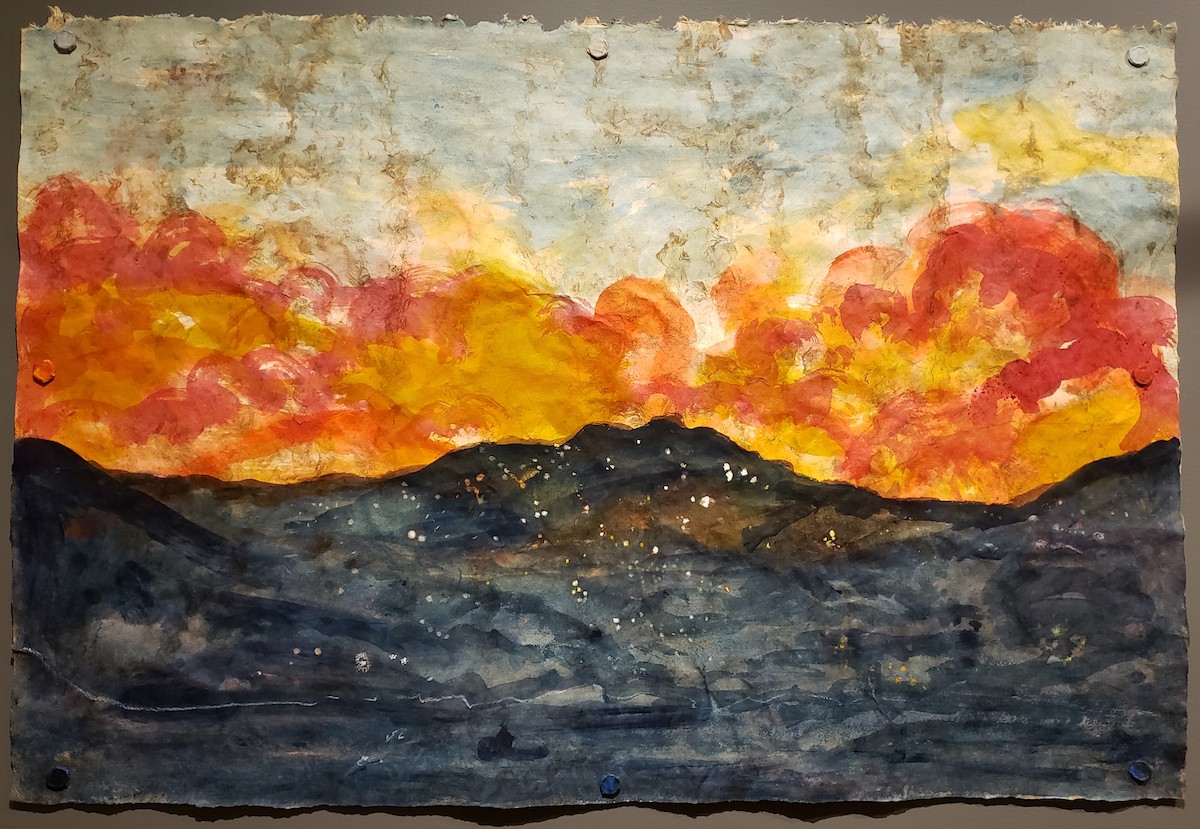
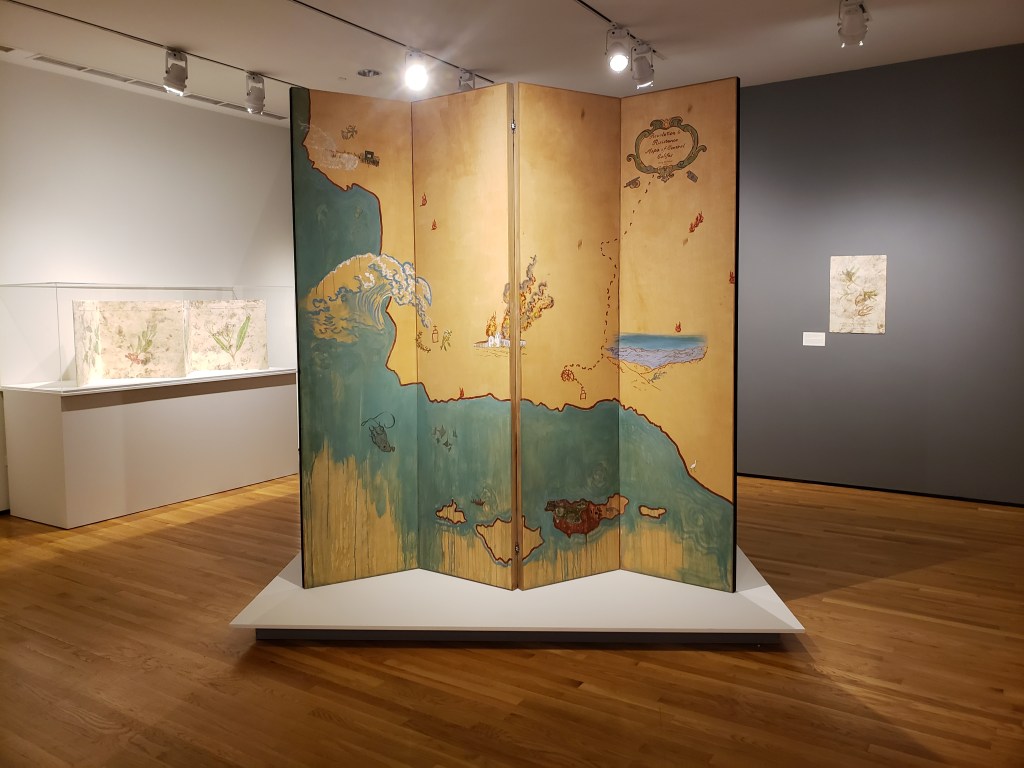
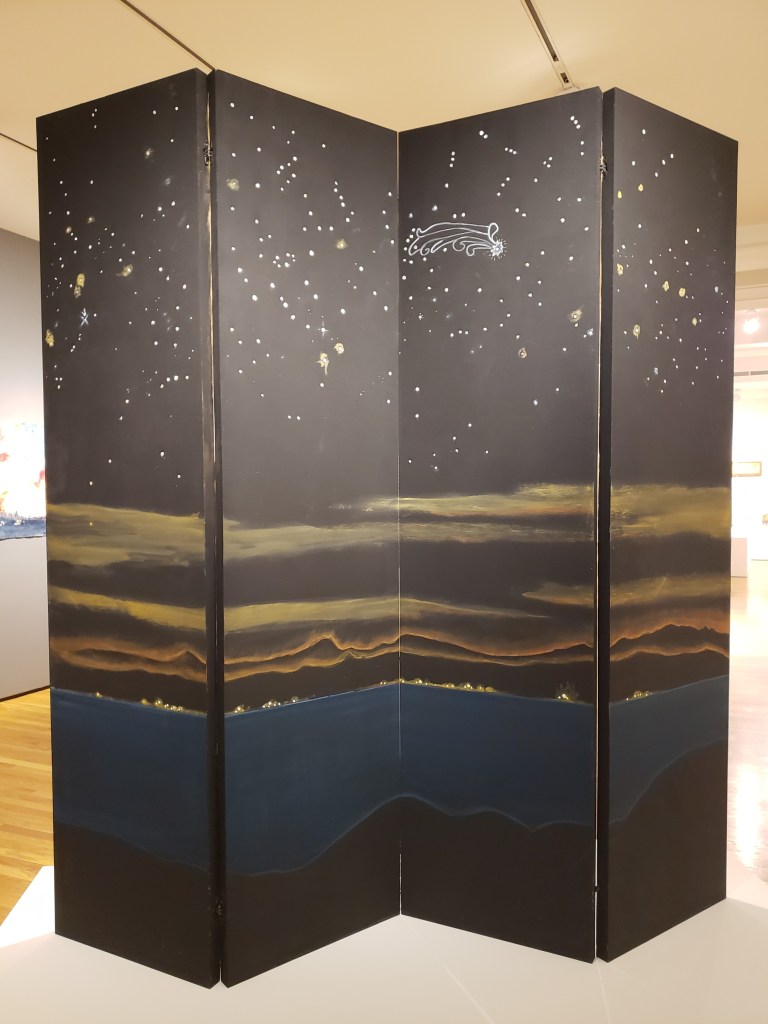



You must be logged in to post a comment.